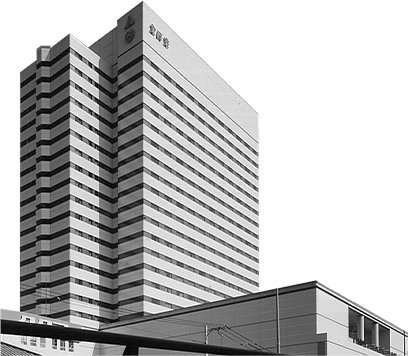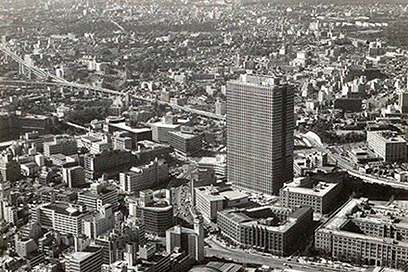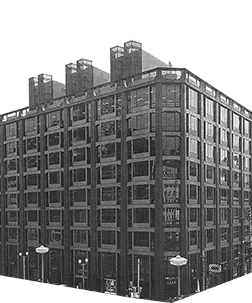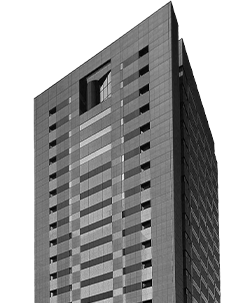 05
1984
05
1984
Osaka
The Dojima Daibiru Building
Construction of Our First Hotel Through a Pioneering Application of Air Rights
Daibiru's Increasing Involvement in Urban Renewal Projects
How do you make efficient, wholesome, high-level use of limited land? This was an extremely difficult problem in the metropolises of Tokyo and Osaka. The Urban Renewal Act was enacted in 1969 to promote such development. This Act triggered a surge in office building development during Japan’s high-growth period, but the boom came to an end with the two energy crises of the 1970s. Afterward, urban renewal projects had trouble getting off the ground until the 1980s.
-

The revised Building Standards Act made it possible to build a skyscraper.
The decisive difference with the previous situation was that high-quality urban development had moved on from the stage where securing quantity was sufficient. Behind the shift from quantity to quality were legal changes that promoted urban redevelopment—most notably, the specific district system established by the City Planning Act and revised Building Standards Act, which took effect in April 1961. This is a system in which a building’s floor–area ratio and height are determined separately during urban planning, instead of applying the default floor–area ratio and the Building Standards Act’s height restrictions for a given district. In July 1963, the Building Standards Act was revised to establish a floor–area regulation which, when combined with the elimination of height restrictions, would allow for the construction of skyscrapers. The first building constructed under these legal changes was none other than the Kasumigaseki Building, which opened in 1968. Another development that came to be seen as part of these trends was the creation of sectional superficies for underground space and airspace, or “air rights” for short, which were permitted by a 1966 amendment to the Japanese Civil Code. Buildings that made use of these rights began appearing in the 1980s.
So what is meant here by air rights? There are two types of air rights: air rights used for the temporary construction of power lines, utility poles, tunnels, and so on, and air rights used for the purpose of effective land use. The latter rights are what is used for urban redevelopment. In other words, they apply to real estate transactions in which an unused surplus floor area allowance based on the floor-area ratio stipulated by urban planning can be transferred to adjacent property in special areas, such as specific districts or high-use districts. This makes it possible to construct a building with more floor area than would otherwise be allowed by purchasing surplus floor area allowance. In a sense, this was a natural transaction to adopt for the promotion of high-level urban renewal projects. Daibiru first attempted such air rights transactions for the Dojima Daibiru Building project, which was planned for Dojimahama, Kita-ku, Osaka.
-
1927 1931 Hibiya Daibiru Buildings
No. 1 and No. 2 -
2007 International Operations
-
- An Unexpected Discovery of a Good Property
- Mutual Trust and a Long-Term Perspective as Points of Agreement
- The Acquisition of a Property in Hanoi Through Unity of Philosophy
- Implementing Daibiru Quality Through Building Renovations
- Challenges in Australia, Our Second Overseas Expansion Target
- The Discovery of 275 George Street
- Difficult Contract Negotiations with JHG
- Overcoming Several Unexpected Difficulties
-



